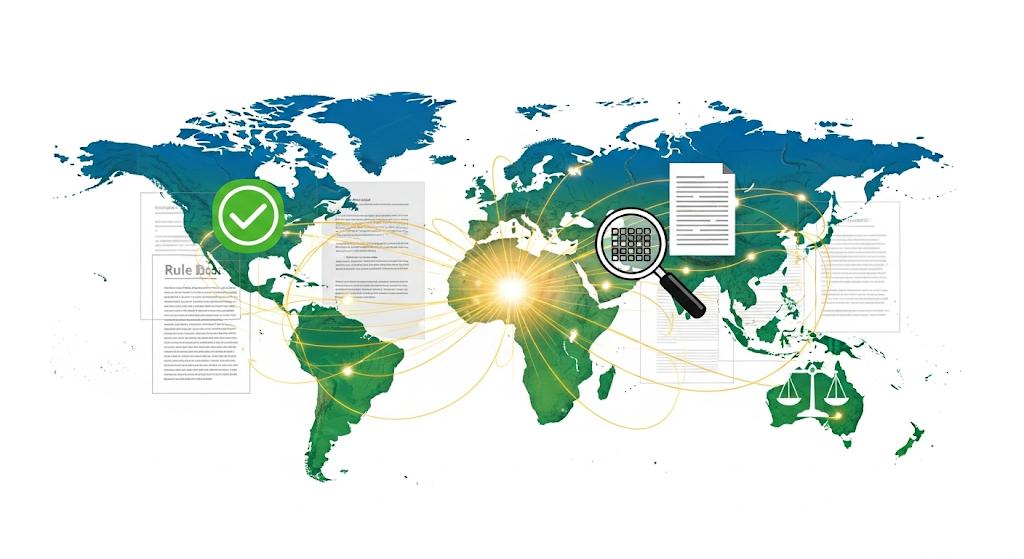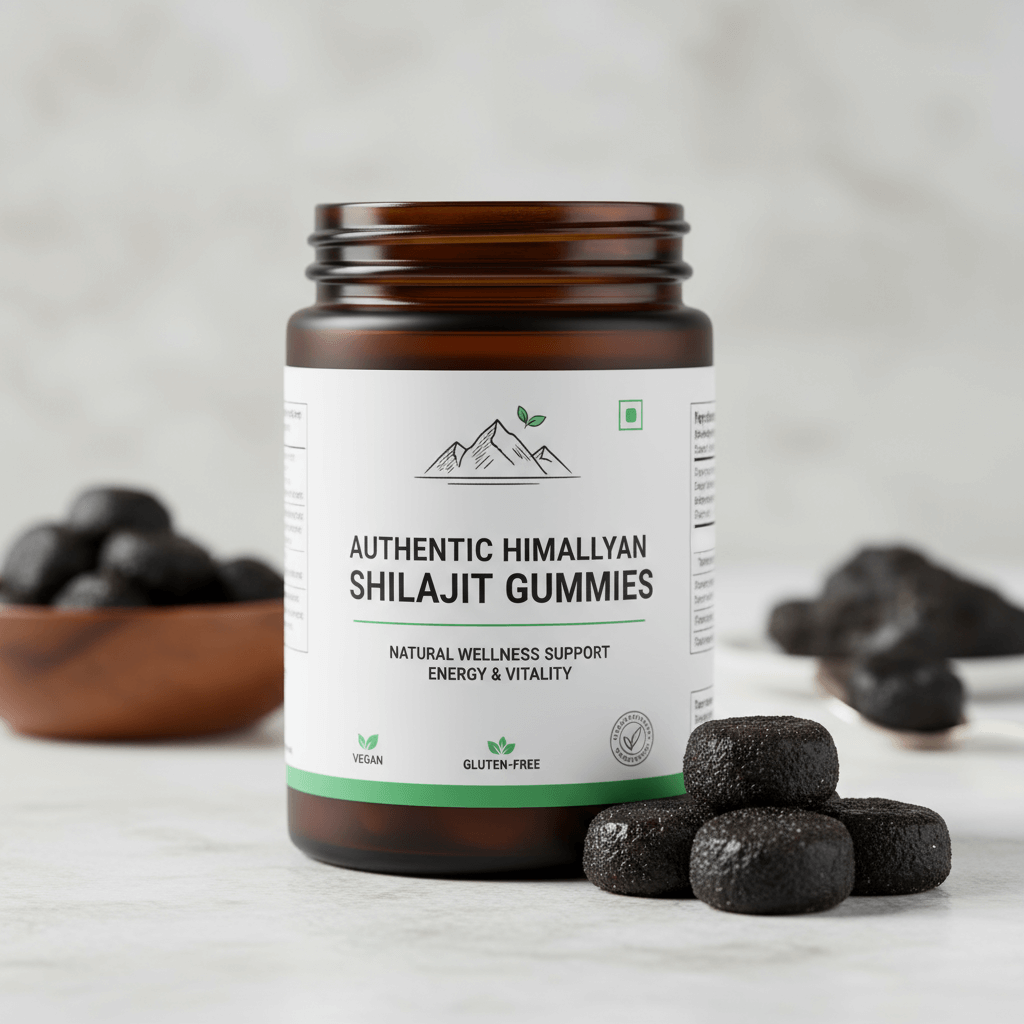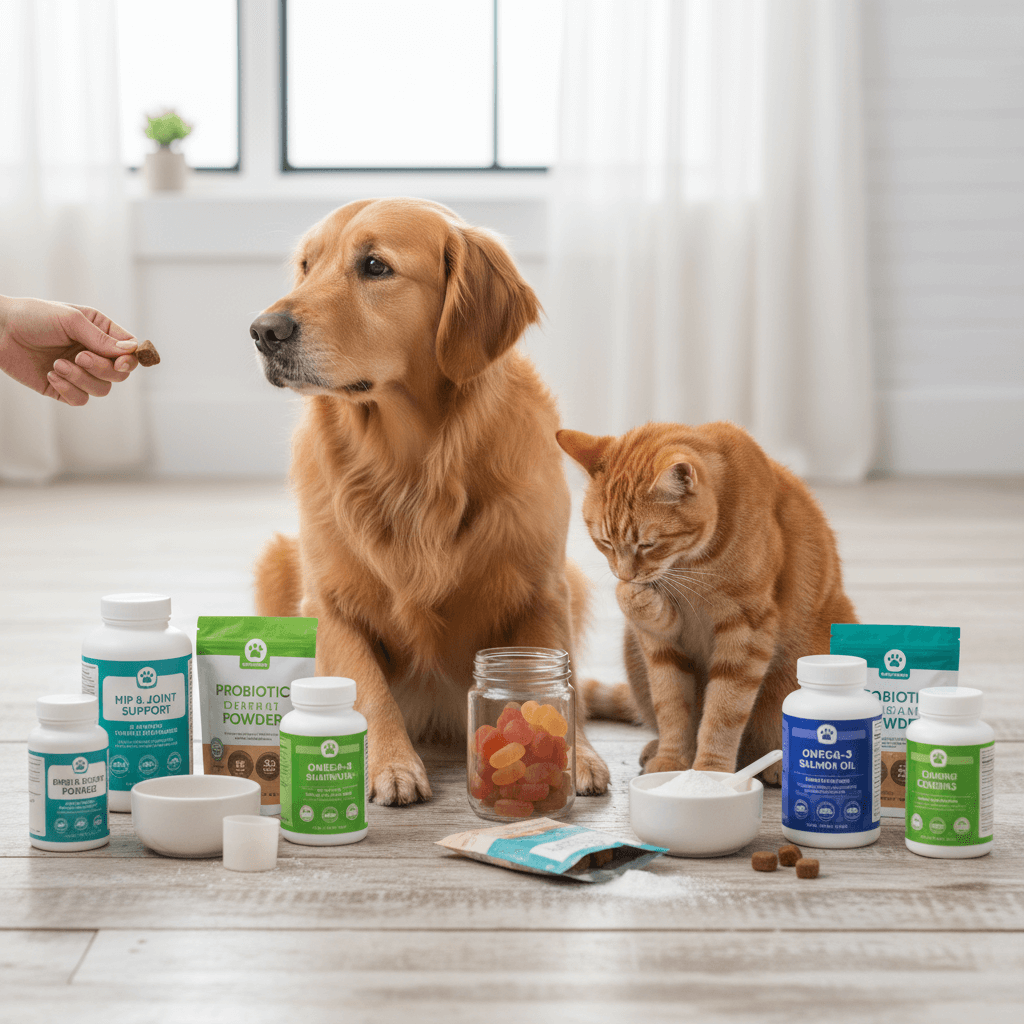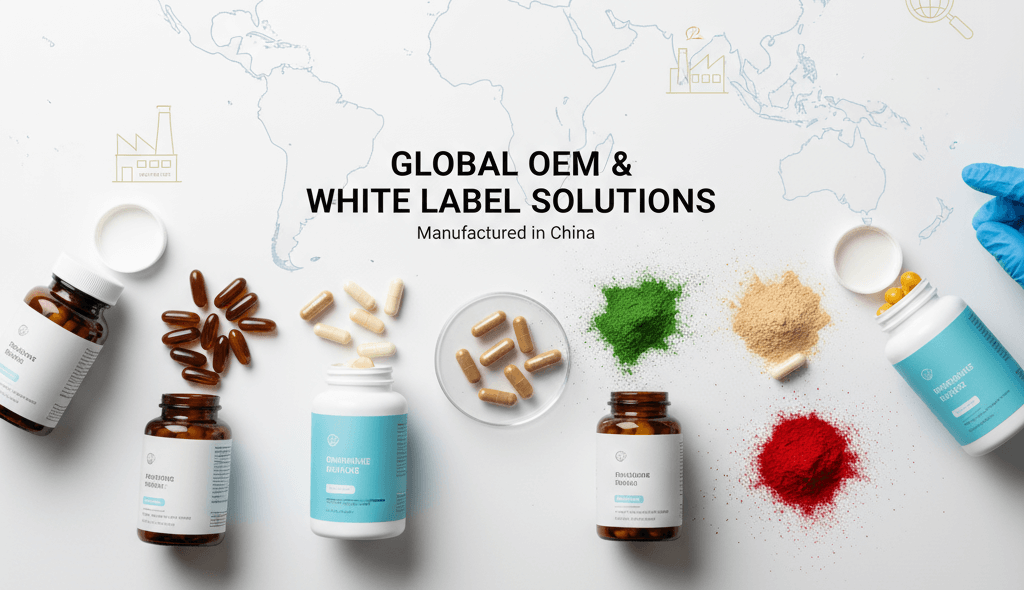In the burgeoning global nutritional supplement market, a brand's ability to communicate the benefits of its products effectively and legally is paramount. However, navigating the intricate web of diverse national and regional regulations governing supplement claims and labeling can be one of the most significant hurdles for international expansion. What is permissible to state on a label in the European Union may be strictly prohibited in the United States, and vice-versa. Missteps can lead to costly product recalls, substantial fines, market bans, and severe reputational damage.

This comprehensive regulatory handbook aims to demystify the complexities of global supplement claims and labeling. We will delve into the distinct regulatory philosophies and specific requirements across major markets, including the European Union, the United States, Canada, and Australia. By understanding the nuances of health claims, nutrition claims, ingredient specificities, and mandatory labeling elements in each jurisdiction, brands can develop robust compliance strategies, mitigate risks, and confidently expand their presence on the international stage.
1. Core Concepts: Claims and Labeling in the Global Context
Before diving into specific markets, it's crucial to understand the fundamental types of claims and labeling elements that are universally, yet diversely, regulated.
1.1 Types of Claims:
Claims are statements made on product labels, packaging, or marketing materials about the product's characteristics, functions, or effects. Their permissibility is rigorously scrutinized:
-
Health Claims:These refer to a relationship between a food/ingredient and health. They suggest that consuming the product will lead to a health benefit.
-
Examples:"X nutrient contributes to the normal function of the immune system," "This product helps maintain healthy bones."
-
Regulatory Approach:Generally the most strictly regulated, often requiring pre-market scientific substantiation and approval by a regulatory authority (e.g., EFSA in EU, specific approval in Australia).
-
-
Nutrition Claims (or Nutrient Content Claims):These state or suggest that a food has particular beneficial nutritional properties due to its content (or lack thereof) of energy, nutrients, or other substances.
-
Examples:"High in Vitamin C," "Low fat," "Source of Fibre."
-
Regulatory Approach:Typically regulated by specific criteria defining what constitutes "high" or "low" for a given nutrient.
-
-
Structure-Function Claims (primarily US):These describe the role of a nutrient or dietary ingredient intended to affect the normal structure or function of the human body. They do not claim to diagnose, cure, mitigate, treat, or prevent disease.
-
Examples:"Calcium builds strong bones," "Fiber maintains bowel regularity."
-
Regulatory Approach:Generally do not require pre-market approval in the US, but must be truthful and not misleading, and must be accompanied by a specific disclaimer.
-
-
Implied Claims:Statements that, while not explicit, suggest a health benefit (e.g., "Athlete's Choice" for a supplement). These are often scrutinized under the same rules as explicit claims.
1.2 Essential Labeling Information:
Beyond claims, labels must carry mandatory factual information to inform consumers and ensure product safety. While specifics vary, common elements include:
-
Product Name/Identity
-
Net Quantity of Contents
-
Ingredient List (with allergens highlighted)
-
Supplement/Nutrition Facts Panel (showing nutrient amounts)
-
Directions for Use/Recommended Daily Dose
-
Warnings/Contraindications
-
Name and Address of Manufacturer/Distributor (Responsible Party)
-
Batch/Lot Number
-
Best Before/Expiry Date
-
Storage Conditions
-
Country of Origin
1.3 Language Requirements:
Crucially, labels must typically be in the official language(s) of the country where the product is marketed. For multi-country regions like the EU, multi-language labels are common.
2. European Union (EU): Harmonization with National Nuances
The EU's regulatory framework for food supplements is complex, aiming for harmonization but allowing significant national variations, especially concerning ingredients and maximum dosages.
2.1 Key EU Regulations:
-
Directive 2002/46/EC (The Food Supplements Directive):Defines food supplements, lists permitted vitamins and minerals (and their forms), and sets general labeling rules. Crucially,it allows member states to set their own maximum levelsfor vitamins and minerals.
-
Regulation (EC) No 1924/2006 (Nutrition and Health Claims Regulation - NHCR):
-
The Golden Rule:Onlyauthorizednutrition and health claims, listed in theEU Register of Nutrition and Health Claims, are permitted. Any claim not on this register is prohibited.
-
Nutrition Claims:(e.g., "high fibre") must meet specific thresholds defined in the NHCR Annex.
-
Health Claims:Require scientific substantiation and pre-market authorization by the European Commission, based on EFSA's (European Food Safety Authority) scientific opinion.
-
-
Regulation (EU) 2015/2283 (Novel Foods Regulation):Any food ingredient (including those in supplements) not widely consumed in the EU before 15 May 1997 is a "Novel Food" and requires pre-market authorization. This significantly impacts new botanicals or innovative ingredients.
-
Regulation (EU) No 1169/2011 (Food Information to Consumers - FIC):Sets general food labeling rules, including font size, allergen declaration, and nutrient declaration formats.
2.2 EU Claim and Labeling Specifics:
-
Health Claims:Very strict. Must be generic, not brand-specific, and only those explicitly authorized can be used. Claims related to "disease prevention, treatment, or cure" are strictly prohibited.
-
Nutrition Claims:Must conform to predefined criteria (e.g., "Source of Vitamin C" requiresof NRV peror per serving).
-
Mandatory Labeling (FIC & FS Directive):
-
"Food supplement" declaration.
-
"Do not exceed the recommended daily dose" warning.
-
"Food supplements should not be used as a substitute for a varied and balanced diet and a healthy lifestyle" warning.
-
"Keep out of the reach of young children" warning.
-
Nutrient Reference Values (NRV%) for vitamins and minerals.
-
Allergens declared (e.g., gluten, milk, soy).
-
Specific warnings for certain ingredients (e.g., caffeine content).
-
-
Language:Must be in the official language(s) of the member state where the product is marketed.
2.3 National Variations within the EU:
Despite harmonization efforts, manufacturers must be acutely aware of:
-
Maximum Dosage Levels:A product formulation valid in one EU country might exceed maximum permitted levels in another (e.g., Vitamin D levels vary significantly).
-
Permitted Ingredients (beyond vitamins/minerals):The use of botanicals, amino acids, enzymes, etc., in food supplements is often regulated at the national level. An ingredient accepted in Germany might be classified as a medicine or prohibited in France.
-
Notification Procedures:Most EU countries require a pre-market notification to their national authorities.
-
Borderline Products:Classification as a food, supplement, or medicine can vary by country.
3. United States (USA): The Dietary Supplement Health and Education Act (DSHEA)
The US regulatory landscape for dietary supplements operates under the Dietary Supplement Health and Education Act of 1994 (DSHEA), overseen by the Food and Drug Administration (FDA). It differs significantly from the EU's pre-market approval approach.
3.1 Key US Regulatory Frameworks:
-
DSHEA (1994):Defines "dietary supplement" and provides a framework for their regulation. Supplements are regulated more like foods than drugs.
-
FDA:Responsible for ensuring supplements are safe and properly labeled. However, unlike drugs, supplements do not require FDA approval before they are marketed.
-
FTC (Federal Trade Commission):Regulates advertising claims to ensure they are truthful, not misleading, and substantiated.
3.2 US Claim and Labeling Specifics:
-
Structure-Function Claims:Most common type. They describe the role of a nutrient or dietary ingredient in affecting the structure or function of the body (e.g., "supports immune health").
-
Requirements:Must be truthful and not misleading.Do NOT require FDA pre-market approval, but the manufacturer must have substantiation that the claim is truthful and accurate.
-
Mandatory Disclaimer:Must be accompanied by the statement: "This statement has not been evaluated by the Food and Drug Administration. This product is not intended to diagnose, treat, cure, or prevent any disease."
-
-
Qualified Health Claims:FDA-authorized health claims supported bysomescientific evidence, but not enough for an "authorized health claim." They must be accompanied by a qualifying statement. (Less common).
-
Authorized Health Claims:Very few are explicitly authorized by the FDA, typically for well-established nutrient-disease relationships (e.g., "Calcium and Vitamin D may reduce the risk of osteoporosis").
-
Nutrition Claims (Nutrient Content Claims):(e.g., "High," "Low," "Good Source") must meet specific FDA definitions.
-
Mandatory Labeling:
-
"Supplement Facts" Panel:Unique to the US, displays serving size, servings per container, and amount of dietary ingredients.
-
Ingredient List:All ingredients listed.
-
Allergen Declaration:Major food allergens must be clearly listed.
-
Warnings:Specific warnings for certain ingredients (e.g., iron overdose warnings), or for specific populations (pregnant women, children).
-
Manufacturer/Distributor information.
-
Net Quantity.
-
-
Language:English is required. Other languages are optional but must also include English.
3.3 Key Differences from EU:
-
Pre-market Approval:Not required for supplements in the US, while it is for specific claims (EU) and Novel Foods (EU).
-
Responsible Party:Manufacturers are responsible for ensuring safety and compliance, not the FDA pre-market.
-
Claim Types:Structure-function claims (with disclaimer) are broader and more flexible than EU health claims.
-
Dosage:Generally fewer strict maximum dosage levels than in the EU, though responsible manufacturers adhere to safe upper limits.
4. Canada: Natural Health Products (NHPs)
Canada regulates natural health products (NHPs), which include vitamins, minerals, herbal remedies, probiotics, and other natural products. The system is managed by Health Canada and is a hybrid of pre-market approval and post-market surveillance.
4.1 Key Canadian Regulatory Frameworks:
-
Natural Health Products Regulations (NHPR):Governs the sale, manufacture, packaging, labeling, and importation of NHPs.
-
Health Canada (NHPD - Natural Health Products Directorate):The division responsible for regulating NHPs.
4.2 Canadian Claim and Labeling Specifics:
-
Product License (NPN/DIN-HM): All NHPs must have a product licensefrom Health Canada before being sold. This involves submitting a product license application detailing ingredients, dose, claims, and safety/efficacy evidence. ANatural Product Number (NPN)or aHomeopathic Medicine Number (DIN-HM)is issued upon approval.
-
Health Claims:Only claims approved by Health Canada are permitted. Claims must be supported by evidence (traditional use, scientific literature) submitted during the licensing process. They can be specific (e.g., "helps support immune function") or general.
-
Mandatory Labeling:
-
Product Name.
-
Product License Number (NPN/DIN-HM).
-
Licence Holder Name and Address.
-
Recommended Dose.
-
Recommended Use or Purpose.
-
Risk Information (Warnings, Contraindications, Adverse Reactions):Often very detailed.
-
Medicinal Ingredients:Listed with their proper name, quantity, and source.
-
Non-Medicinal Ingredients.
-
Net Quantity.
-
Batch Number and Expiry Date.
-
-
Language:Labels must be bilingual (English and French).
4.3 Key Differences from EU & US:
-
Pre-market Licensing:A clear differentiator. Every NHP product needs a license before sale.
-
Specific Claim Pre-approval:Claims are approved as part of the NPN application, similar to the EU's authorized claims but more broad in scope per product.
-
Detailed Risk Information:Canadian labels often carry more extensive warning and risk information than US or EU counterparts.
-
Bilingualism:Mandatory English and French on labels.
5. Australia: Therapeutic Goods Administration (TGA)
Australia regulates supplements as "Complementary Medicines" under the Therapeutic Goods Act 1989, overseen by the Therapeutic Goods Administration (TGA). This system is one of the strictest globally, distinguishing between "listed" and "registered" medicines.
5.1 Key Australian Regulatory Frameworks:
-
Therapeutic Goods Act 1989:Primary legislation.
-
TGA:Administers the Act.
5.2 Australian Claim and Labeling Specifics:
-
Product Listing/Registration:
-
Listed Medicines (AUST L):Most complementary medicines (vitamins, minerals, herbal) fall here. They are assessed forquality, safety (low risk), and manufacturers must hold GMP certification. Claims are limited to"pre-approved low-level indications"(e.g., "helps reduce free radical damage"). They do not require pre-market evaluation for efficacy (as claims are limited).
-
Registered Medicines (AUST R):Higher risk, require comprehensive pre-market evaluation forquality, safety, and efficacy. For more serious health claims.
-
-
Permitted Indications:For listed medicines, only indications (claims) from the TGA's"Permissible Indications" listare allowed. These are pre-worded and cannot be altered. Higher-level claims require a registered product.
-
Mandatory Labeling:
-
AUST L or AUST R number.
-
Active Ingredients:Listed with amount.
-
Excipients (non-active ingredients):Listed.
-
Dosage and Directions.
-
Warning Statements:Specific to ingredients (e.g., "If symptoms persist, consult your healthcare practitioner").
-
Allergen information.
-
Batch Number and Expiry Date.
-
Name and Address of Sponsor (Australian-based legal entity).
-
-
Language:English is required.
5.3 Key Differences from Other Markets:
-
Dual System (Listed/Registered):Unique to Australia, determines the level of scrutiny and permissible claims.
-
Permitted Indications List:Very specific and rigid claims for listed products, limiting flexibility.
-
TGA Sponsor:Requirement for an Australian-based legal entity responsible for the product.
-
Manufacturer GMP:All manufacturers of therapeutic goods for the Australian market (including complementary medicines) must be licensed by the TGA and undergo regular audits for GMP compliance.
6. Prohibited Claims & Common Pitfalls (Global Perspective)
Despite varying regulations, several types of claims are universally prohibited or highly scrutinized:
-
Disease Claims:Statements implying that a supplement can diagnose, cure, mitigate, treat, or prevent a disease (e.g., "Cures diabetes," "Prevents cancer"). This crosses the line into drug claims.
-
Misleading or Deceptive Claims:Any statement that is factually untrue, creates a false impression, or omits material information.
-
Exaggerated Claims:Overstating the effects or benefits of a product (e.g., "Miracle cure," "Instant results").
-
Unsubstantiated Claims:Claims not supported by credible scientific evidence. This is a primary focus of regulatory bodies worldwide.
-
Implicit Claims:Using imagery, testimonials, or brand names that imply a prohibited claim (e.g., a picture of a diseased organ, even without explicit text).
-
Testimonials/Endorsements:While permitted in some regions, they must be truthful and not misleading, and often require specific disclaimers. In some regions (e.g., certain EU countries), medical professional endorsements for food supplements are highly restricted.
-
Comparative Claims:Comparing your product to a competitor's. These usually require strong, verifiable substantiation.
Common Pitfalls:
-
"One-Size-Fits-All" Labeling:Attempting to use a single label design for multiple international markets without country-specific adjustments.
-
Reliance Solely on Manufacturer:While manufacturers are invaluable, the ultimate legal responsibility for product compliance often lies with the brand owner.
-
Ignoring National Interpretations:Underestimating the impact of individual country interpretations within harmonized regions (like the EU).
-
Outdated Regulatory Knowledge:Regulations are constantly evolving; failure to keep up can lead to non-compliance.
-
Insufficient Scientific Substantiation:Not having robust, relevant scientific evidence to back up claims.
7. Strategies for Global Compliance and Risk Mitigation
Navigating the global claims and labeling landscape requires a proactive, strategic approach.
-
Early Regulatory Strategy:Integrate regulatory planning from the very beginning of product development, identifying target markets and their specific requirementsbeforeformulation.
-
Robust Scientific Substantiation:Ensure all claims are backed by strong, relevant, and credible scientific evidence. This means primary research, clinical trials, or established scientific consensus.
-
Partner with Expert Manufacturers/Consultants:
-
Manufacturers:Choose manufacturers with proven experience in your target markets, holding relevant certifications (e.g., EU GMP for Europe, TGA licensing for Australia). Their in-house regulatory teams are invaluable.
-
Regulatory Consultants/Legal Counsel:For complex multi-market strategies or borderline products, engage specialized legal or consulting firms. They can provide nuanced advice on national interpretations and notification processes.
-
-
Modular Product Design:Consider designing products with a modular approach, allowing for minor formulation tweaks (e.g., adjusting dosage of certain ingredients) or packaging changes to meet different national requirements without a complete overhaul.
-
Multi-Language Labeling & Localization:Invest in high-quality, legally accurate translations for labels and marketing materials. Ensure cultural relevance and avoid direct, literal translations that might be misleading or legally incorrect.
-
Continuous Regulatory Monitoring:Regulations are dynamic. Implement a system for tracking updates from key regulatory bodies (FDA, EFSA, Health Canada, TGA) and industry associations. Your manufacturer or consultant should ideally provide this service.
-
Internal Compliance System:Establish clear internal procedures for label review, claim substantiation, and marketing material approval to ensure all communications adhere to regulatory guidelines.
-
Digital Asset Management:Ensure all online claims (website, social media, ads) are consistent with approved label claims and comply with advertising regulations in each target country.
Conclusion
Mastering global supplement claims and labeling is not merely a compliance burden but a strategic imperative that underpins successful international expansion. By thoroughly understanding the distinct regulatory philosophies of key markets, committing to rigorous scientific substantiation, and fostering strategic partnerships, brands can transform potential legal pitfalls into pathways for growth.
A proactive and well-informed approach ensures not only market access but also builds deep consumer trust, allowing your nutritional products to reach and positively impact lives across the globe.
Zhongci Health: Your Global Regulatory Compliance Partner
Navigating the complexities of international supplement regulations, from the EU's strict NHCR to the US's DSHEA, requires unparalleled expertise. AtZhongci Health, we empower brands to achieve seamless global market entry by providing comprehensive manufacturing solutions coupled with robust regulatory guidance. Our experienced team deeply understands the nuances of global claims, labeling, and product compliance across major markets, ensuring your products are meticulously crafted and perfectly positioned for success worldwide. Partner withZhongci Healthto confidently expand your brand's reach while maintaining the highest standards of integrity and adherence to international regulations. Contact us today to learn how we can simplify your global journey.






